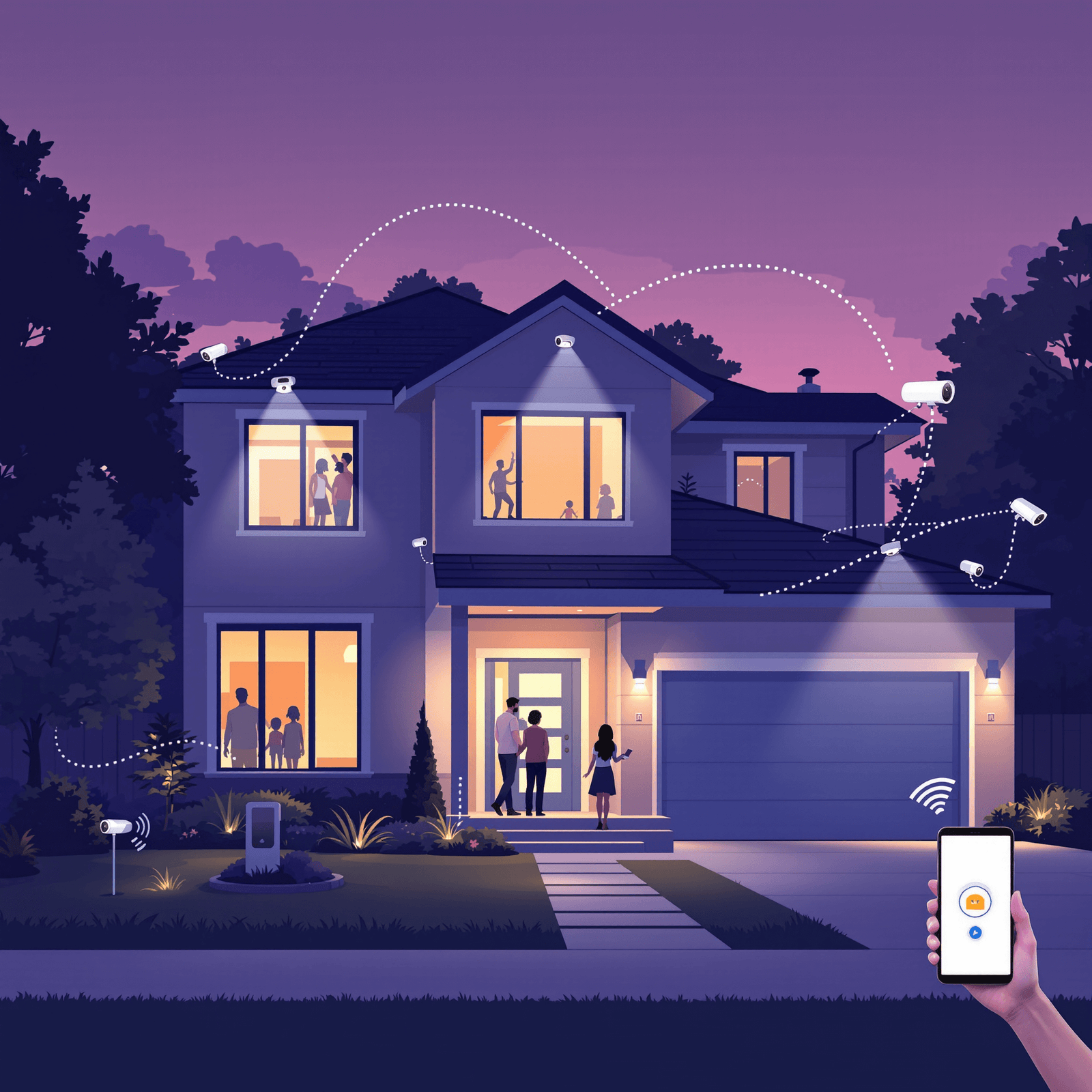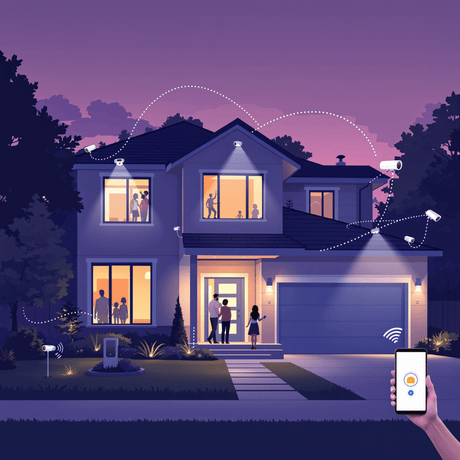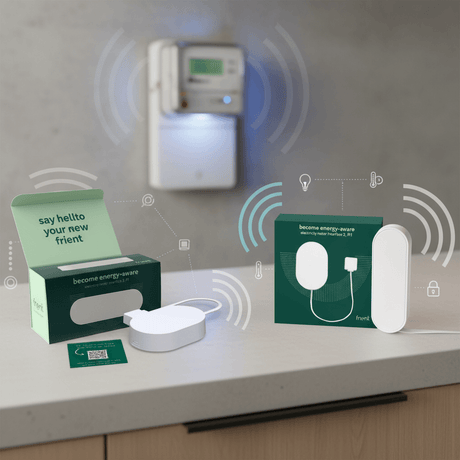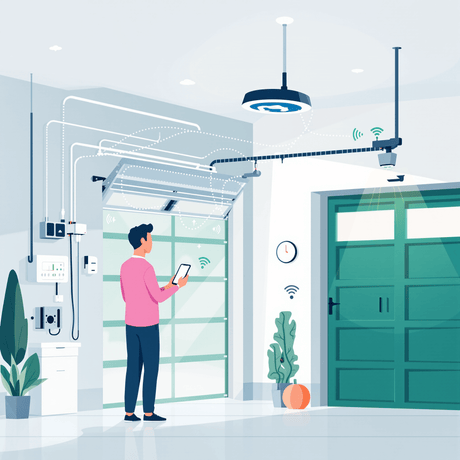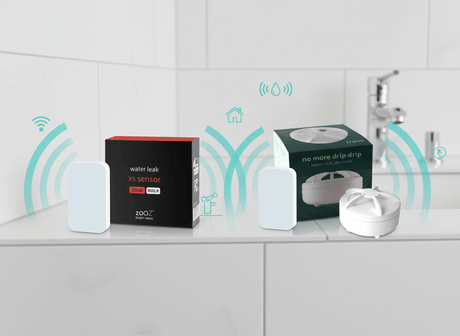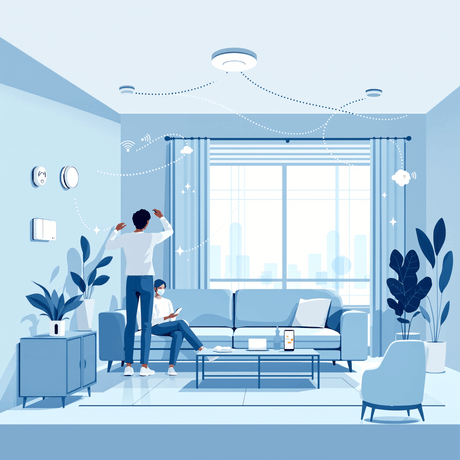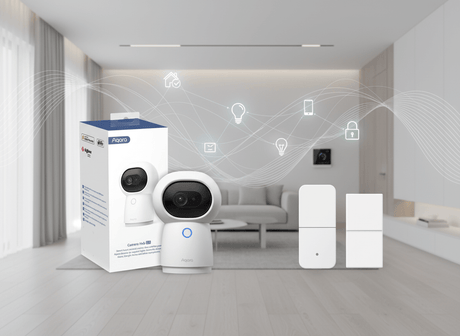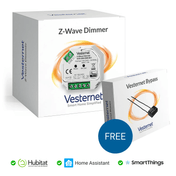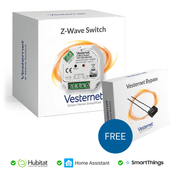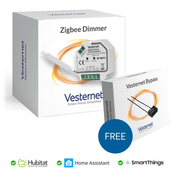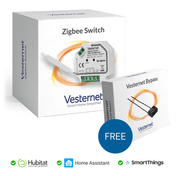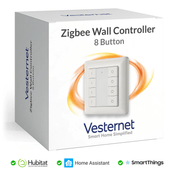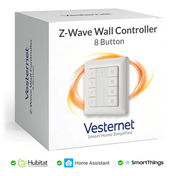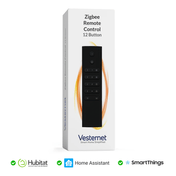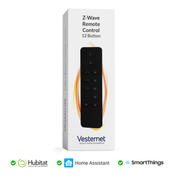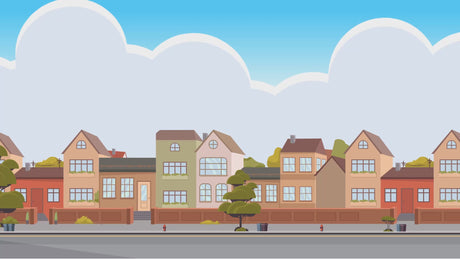Home security concerns have escalated dramatically in recent years, with break-ins occurring every 26 seconds across the UK according to recent crime statistics. Modern burglars have adapted their methods, exploiting new technologies whilst traditional security measures like basic alarms and static locks often fall short of providing comprehensive protection. Today's security threats extend beyond opportunistic theft to include sophisticated reconnaissance, package theft, and coordinated criminal activities that require more advanced deterrent systems.
Smart home security systems with cameras offer a revolutionary approach to property protection, delivering 24/7 monitoring capabilities, instant real-time alerts, and seamless remote access from anywhere in the world. These intelligent CCTV systems integrate effortlessly with broader home automation networks, creating layered security ecosystems that respond automatically to threats whilst providing homeowners with unprecedented control over their property's safety. The technology has become remarkably accessible, transforming professional-grade security from a luxury service into an essential component of modern home protection.
This comprehensive guide will equip you with the knowledge to design, install, and optimise the best home security system for your specific needs. You'll discover expert strategies for camera selection, learn proven placement techniques that maximise coverage, master integration methods that connect every security component, and develop monitoring protocols that ensure nothing goes unnoticed around your property.
Understanding Smart Home Security Camera Technology
Modern CCTV systems have evolved far beyond simple recording devices, incorporating artificial intelligence, cloud connectivity, and advanced sensor technology that transforms raw video footage into actionable security intelligence. Today's cameras feature sophisticated image processing capabilities, delivering crystal-clear 4K resolution even in challenging lighting conditions through advanced night vision technology and motion-triggered recording systems.
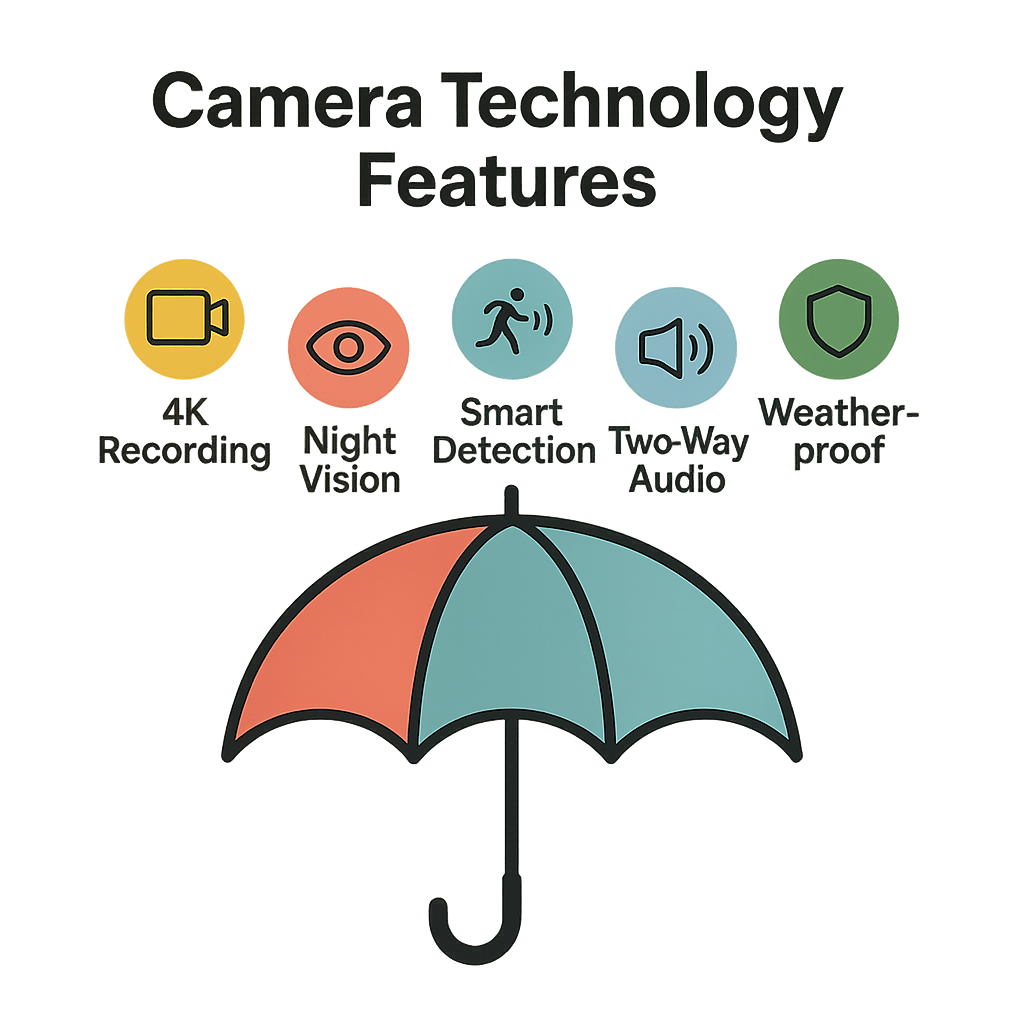
Essential camera technology features:
- High-definition recording with adjustable quality settings for storage optimisation
- Infrared night vision with ranges extending up to 30 metres in complete darkness
- Smart motion detection with customisable sensitivity zones and false alarm reduction
- Two-way audio communication for real-time interaction with visitors or intruders
- Weather-resistant housing rated for extreme temperature and moisture conditions
Connectivity options include wireless systems that integrate seamlessly with Z-Wave and Zigbee networks, offering reliable mesh networking that extends coverage throughout large properties. Wired solutions provide consistent power and data transmission, whilst hybrid systems combine the flexibility of wireless communication with the reliability of hardwired power sources for optimal performance.
Assessing Your Home Security Needs
Effective security planning begins with a comprehensive property assessment that identifies vulnerable access points, high-value areas, and potential blind spots that criminals might exploit. Walk around your property at different times of day, noting areas with limited visibility, multiple escape routes, or valuable items that might attract unwanted attention through windows or doorways.
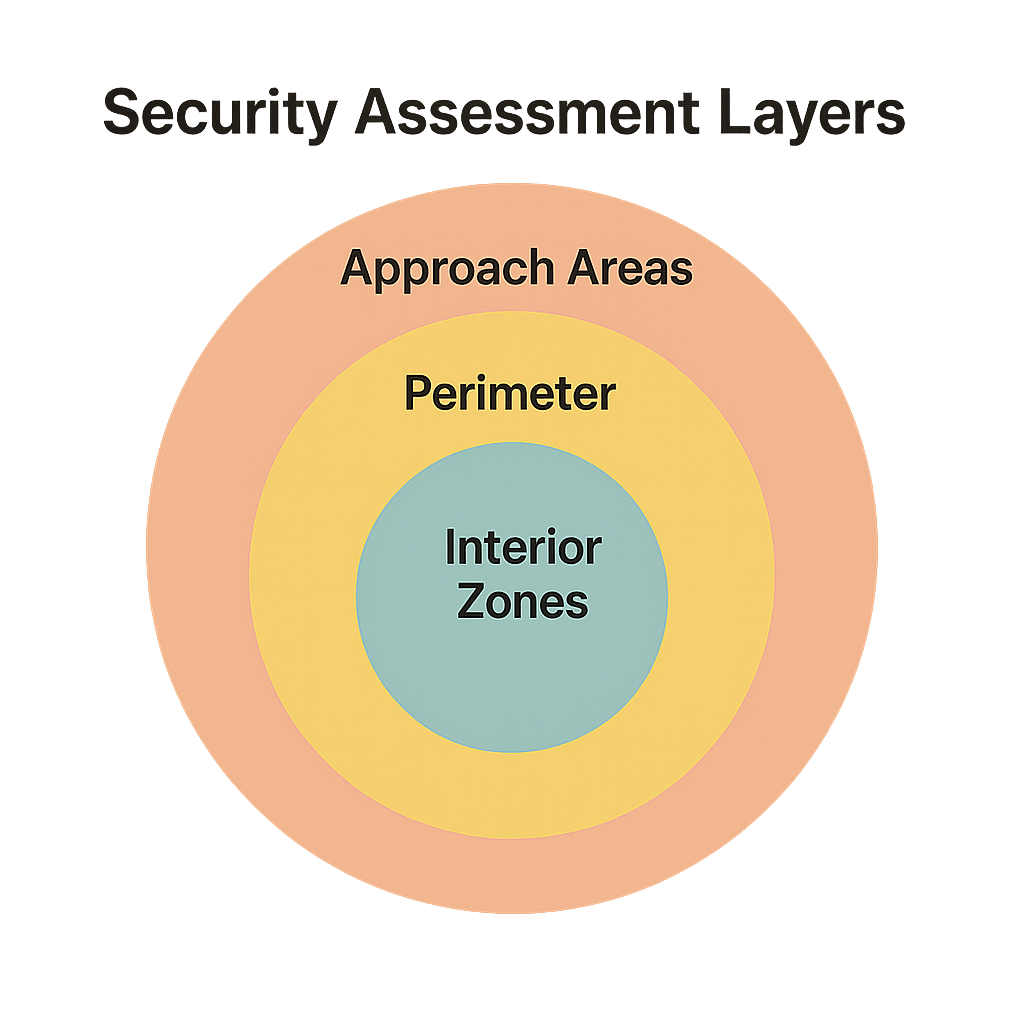
Critical areas requiring camera coverage:
- Main entrances including front doors, back doors, and any side access points
- Ground-floor windows, particularly those concealed by landscaping or architectural features
- Driveways and car parking areas where vehicles and packages are vulnerable
- Garden sheds, garages, and outbuildings containing valuable equipment
Consider your neighbourhood's specific risk factors, such as proximity to busy roads that provide quick escape routes, local crime statistics, and seasonal security challenges like extended holiday absences. These factors will influence whether you need basic deterrent cameras or more sophisticated home security systems with advanced monitoring capabilities and automated response features.
Selecting the Right Security Camera System
Choosing the best home security system requires balancing performance requirements with practical installation constraints and long-term maintenance considerations. Indoor cameras prioritise discreet design and high-resolution recording, whilst outdoor models must withstand harsh weather conditions while delivering reliable performance in variable lighting conditions throughout the year.
Storage solutions significantly impact system functionality and ongoing costs, with local Network Video Recorder (NVR) systems offering complete data control versus cloud-based storage providing remote accessibility and automatic backup protection. Hybrid approaches combine local recording for immediate access with cloud backup for long-term storage and disaster recovery.
Key selection criteria for camera systems:
- Resolution requirements balancing image quality with storage capacity and bandwidth
- Power options including battery-powered, solar-charged, or mains electrical connections
- Integration compatibility with existing smart home platforms and security devices
- Viewing angle coverage to minimise the total number of cameras required
Strategic Camera Placement and Installation
Optimal camera positioning maximises surveillance coverage whilst minimising blind spots and installation complexity. Mount cameras at heights between 2.5 and 3 metres to prevent tampering whilst maintaining clear facial recognition capabilities, angling them slightly downward to capture both approaching individuals and ground-level activities around entry points.
Professional placement strategies:
- Position cameras to overlap coverage areas, eliminating gaps in surveillance zones
- Avoid backlighting from windows or bright outdoor lights that can obscure image quality
- Install weatherproof housing with adequate drainage to prevent moisture accumulation
- Route cables through protective conduits to prevent tampering and weather damage
Common installation mistakes include placing cameras too low where they're easily disabled, positioning them in areas with excessive motion from trees or traffic that triggers false alarms, and failing to test viewing angles during different lighting conditions throughout the day. Regular testing ensures consistent performance across all environmental conditions.
Integration with Smart Home Security Systems
Comprehensive security effectiveness emerges when cameras work alongside motion sensors, door sensors, and alarm systems to create intelligent automated responses to potential threats. Z-Wave and Zigbee protocols enable seamless communication between devices, allowing motion detection to trigger camera recording while simultaneously activating security lighting and sending alerts to your smartphone.
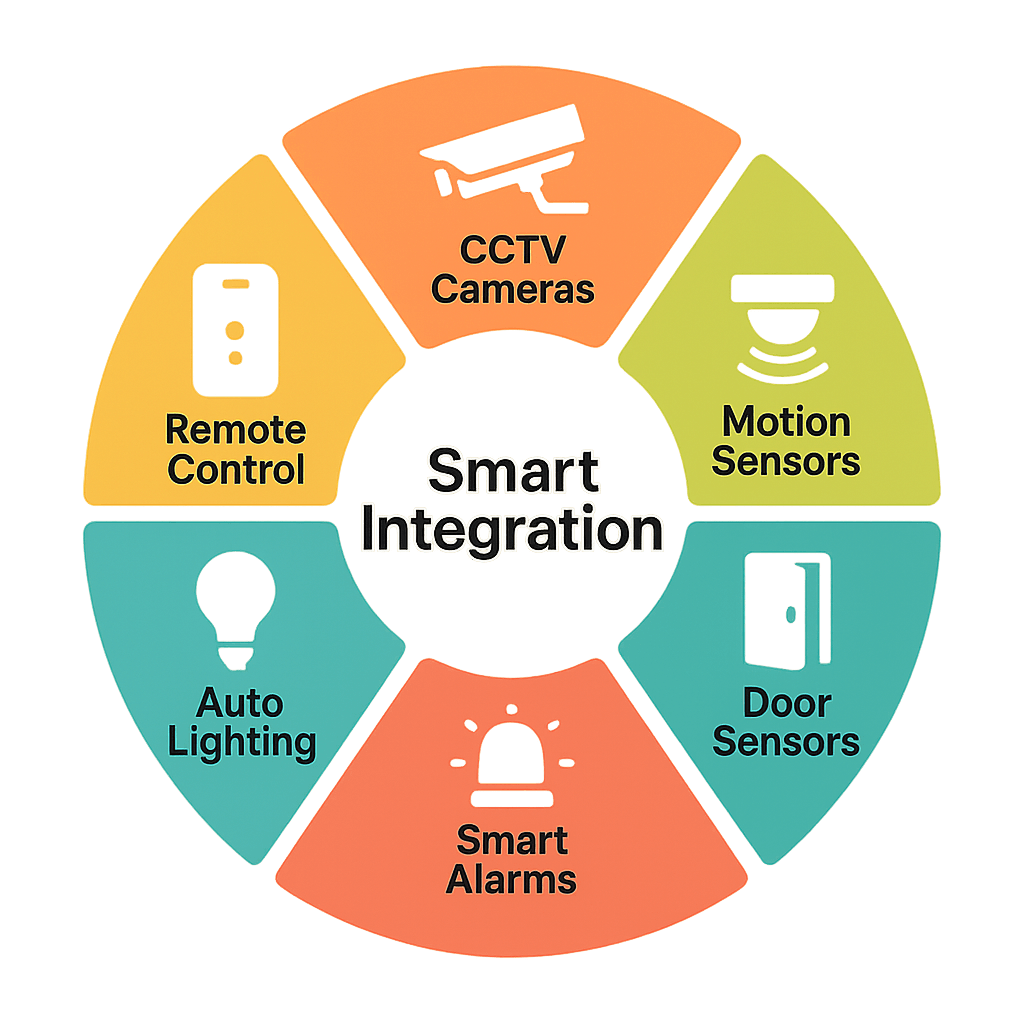
Advanced integration scenarios include connecting window sensors that activate nearby cameras when opened unexpectedly, door sensors that trigger welcome lighting for residents whilst initiating security recording for unexpected visitors, and motion detectors that differentiate between pets, family members, and potential intruders through sophisticated pattern recognition algorithms.
Essential integration components:
- Motion sensors strategically placed to detect approach before reaching camera blind spots
- Door and window sensors providing immediate breach notification and camera activation
- Smart sirens and alarms that activate automatically based on camera-detected suspicious activity
- Wall controllers offering centralised security management and emergency alert capabilities
Setting Up Monitoring and Alert Systems
Effective monitoring systems balance comprehensive coverage with manageable alert frequency, preventing notification fatigue that leads to ignored warnings. Configure motion sensitivity settings to distinguish between routine activities like delivery personnel and suspicious behaviour such as prolonged loitering or attempts to access restricted areas around your property.
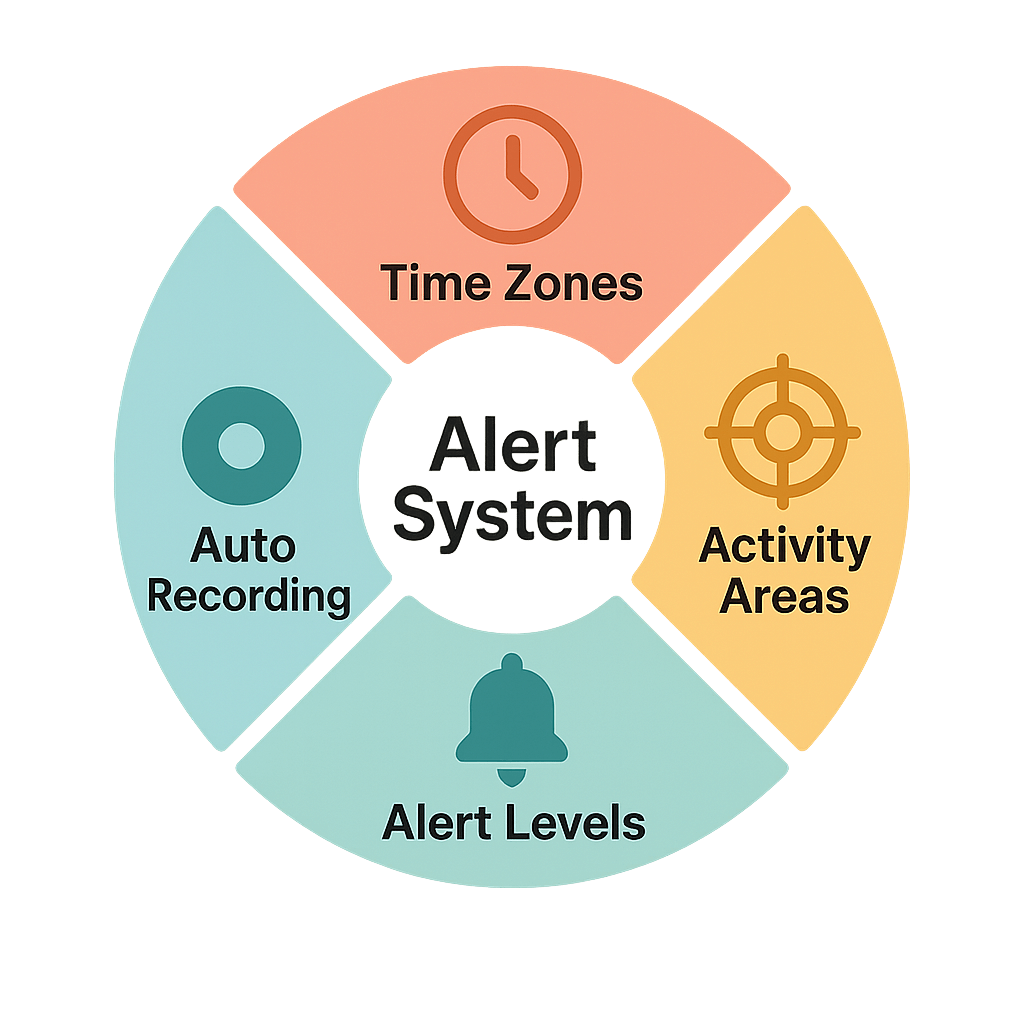
Alert customisation strategies:
- Schedule different sensitivity levels for day and night monitoring periods
- Create activity zones that ignore routine movement like swaying trees or passing pedestrians
- Establish escalating alert protocols from initial notifications to emergency contacts
- Configure automatic recording triggers that capture footage before and after detected events
Remote monitoring capabilities enable real-time property surveillance from anywhere, providing instant access to live camera feeds and recorded footage through secure smartphone applications. This connectivity proves invaluable during holidays, business travel, or whenever you need to verify suspicious activity and coordinate appropriate responses with neighbours or authorities.
Advanced Security Features and Automation
Sophisticated home security systems with cameras can automatically adjust behaviour based on occupancy patterns, activating enhanced monitoring when the house is empty whilst reducing sensitivity during active family periods. Smart scene control integrates security cameras with lighting systems, creating the illusion of occupancy through randomised automation that deters potential intruders.
Remote controllers provide convenient security management without requiring smartphone access, enabling family members to arm or disarm systems easily whilst maintaining centralised monitoring records. Advanced automation includes sunrise and sunset adjustments for motion sensitivity, automatic camera positioning based on seasonal light patterns, and integration with smart locks that provide visual verification before remote access authorisation.
Automated security scenarios:
- Departure detection that activates full surveillance mode when all family members leave
- Arrival recognition that adjusts lighting and recording based on identified residents
- Weather-based sensitivity adjustments preventing false alarms during storms
- Integration with smart doorbells providing comprehensive visitor identification and recording
Maintenance and Troubleshooting Best Practices
Regular maintenance ensures consistent performance and extends equipment lifespan whilst preventing security vulnerabilities that develop over time. Clean camera lenses monthly to maintain image quality, inspect weatherproof sealing twice annually to prevent moisture damage, and update firmware regularly to benefit from enhanced security features and bug fixes.
Essential maintenance tasks:
- Monitor storage capacity and configure automatic deletion of older recordings
- Test backup power systems and replace batteries in wireless components
- Verify network connectivity and signal strength throughout the camera system
- Review and update motion detection zones seasonally to account for landscape changes
Common troubleshooting issues include connectivity drops due to network interference, reduced night vision performance from dirty lenses or failing infrared components, and false alarms triggered by environmental changes like new vegetation or altered lighting conditions. Systematic testing and documentation of system performance helps identify developing problems before they compromise security effectiveness.
Conclusion
Creating an effective home security system requires thoughtful planning that combines proper camera selection, strategic placement, and intelligent integration with broader smart home automation networks. The most successful implementations balance comprehensive coverage with practical usability, ensuring that sophisticated technology enhances rather than complicates daily life whilst providing genuine protection against evolving security threats.
Start your security transformation by identifying your property's most vulnerable areas, then gradually expand your system as you gain confidence with the technology and understand your specific monitoring needs. Professional guidance can help you avoid common pitfalls whilst ensuring that your investment delivers maximum protection value through proper component selection and optimal configuration strategies.
Ready to explore advanced security solutions for your smart home? Browse Vesternet's comprehensive range of cameras, motion sensors, door sensors, sirens, and controllers to find the perfect components for your security requirements. Our expert team provides personalised advice to help you design and implement the best home security system that matches your property's unique needs and your family's lifestyle.

